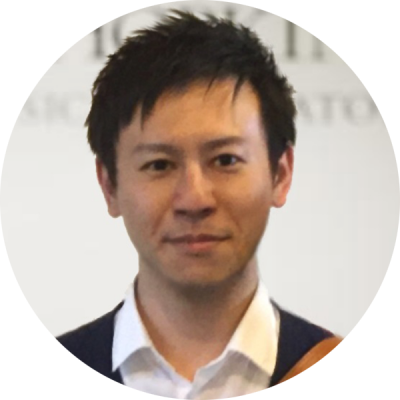
Yuuta Imoto
Our body is made up of about 37 trillion cells. These cells communicate with each other to regulate homeostasis and sustain our life. For example, for neuronal communication, neurotransmitters are released from pre-synaptic neurons and received by post-synaptic neurons. During wound healing, epidermal growth factors are delivered to the neighboring cells for the regeneration of the damaged tissue. When cells are invaded by pathogens, messenger protein, interleukin, is immediately sent to immune cells. Receptor proteins for these signal transmitters are sitting on the surface of the cell (plasma membrane). To control the cellular communications, cells constantly alter their shapes by adding and removing membranes with the receptors to their surface. These membrane remodeling events essentially control all cellular functions and thus are fundamental to our life. However, how these processes are fueled is not well understood, particularly during endocytosis — the process by which plasma membrane is removed from the cell surface.
During endocytosis, a piece of plasma membrane is invaginated and pinched off to generate a vesicle. The pinching-off reaction is mediated by the motor protein dynamin. Dynamin molecules form a ring-shaped structure at the base of the membrane invagination and constrict the membrane to close the gap between two opposing membranes. This mechanochemical reaction is fueled by intracellular energy currency guanosine triphosphate, GTP. Dynamin demands a large amount of GTP to generate the motive force, however the GTP concentration within cytoplasm is insufficient for the dynamin function. In contrast, the GTP concentration sufficient for dynamin function would be toxic to the cell. Then, how does the cell regulate GTP?
To address this question, I decided to measure the GTP level during endocytosis using a fluorescence-based biosensor for GTP. To our surprise, the GTP level was transiently elevated at the site of endocytosis. This temporally elevated GTP-fueled dynamin activity. Furthermore, using a genetic approach, I identified a specific protein, which is recruited to the endocytic sites to generate GTP. These results demonstrate that cells regulate the GTP level locally and transiently during endocytosis and thereby have provided a new insight into the energy regulation for membrane remodeling. These findings have further implications in the field since GTP is consumed by molecular nanomachines used in many intracellular processes, such as synaptic vesicle recycling, proliferation of the cell, organelle homeostasis and cell migration. Thus, my research opened up a new avenue in the field to investigate local energy control for cellular functions.
This research was done in the Shigeki Watanabe lab (Department of Cell Biology).
Questions & Answers
What does receiving this award mean to you personally and professionally? Do you have any connection with the particular award you received?
Personally, this award is an encouragement for my research career — it made me feel that I can continue on what I am really interested in. At the same time, it made me realize the importance of the environment and people surrounding me. It is hard to imagine doing the same experiments without the people around me, especially my family, my boss (Shigeki), all the lab members and collaborators. I’m having a great experience during my time here at Hopkins.
What contributed to your project’s success?
I am very fortunate to be working with amazing lab members and collaborators in Hopkins. Each of their important contributions made this project possible. I especially owe my thanks to my adviser Shigeki Watanabe — his advice, patience and encouragement were the driving forces behind my success. I also have my family to thank for their support, which helped me overcome every obstacle.
What has been your best/most memorable experience while at Johns Hopkins?
Since I came here from Japan two years ago, I feel everything is exciting and memorable, but particularly exposing myself to diverse culture and working with open-minded people at Hopkins have been the best experiences.
Tell us something interesting about yourself.
Originally, I was interested in astrophysics and engineering as an undergraduate student. During the transition to a graduate student, I was influenced by the fascinating work of Gottfried Schatz and Cristian de Duve, who found mitochondrial DNA and lysosome/peroxisome, respectively. Because I was surrounded by their former trainees, I became interested in cell biology. It was surprising to me, that a cell is like a galaxy. Even within a ~×101–104 μm2 of a tiny cell, there exist a numerous number of beautiful endosymbiotic structures just like fixed stars in an estimated two trillion galaxies including the Milky Way. Those structures are visible under electron or optical microscopy and can be proliferated autonomously by division; a part of the organellar membrane is constricted and eventually pinched-off.
From the time I was a graduate student, I have been working on how membrane-bounded structures alter their shapes. I have met great mentors, including Dr. Watanabe, and learned various skills, such as electron microscopy, subcellular fractionation technique, mass-spectrometry of protein and nucleotides. More importantly, they taught me philosophical aspects of science, and always let me think about big pictures, originality and impacts in the field. I think science is like a long journey. Every time I arrive at the destination (results of experiment), I find both the expected based on people who have been there and the unexpected (either because nobody has been there or because they have not experienced it in the same way I do) (interpretation), make a log (writing papers), and then take off to the next journey. It is sometimes (almost every time) painful, and I am not sure what to do or where to go. If I have not met great guides along the way (mentors), I would be lost and could not finish the journey. I am thankful for my mentors, who have made me “unique,” and again I thank all the people who supported me throughout.